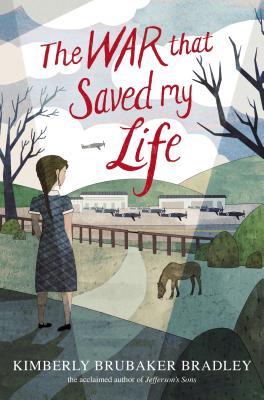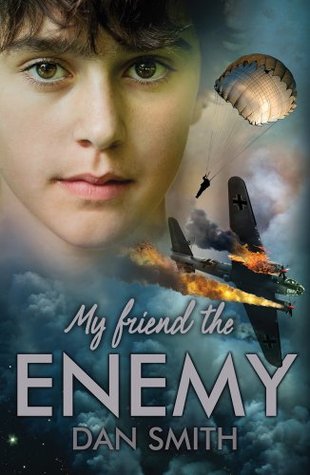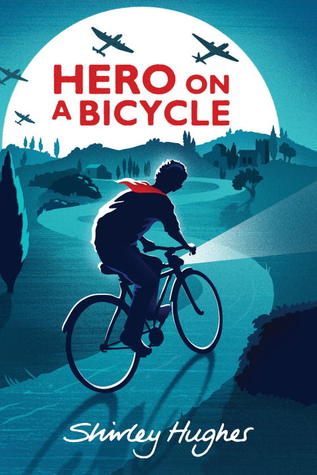I realize now I had a romantic and one sided view
of World War II growing up.
As a Baby Boomer, I enjoyed the music of Glenn Miller and the big bands, and saw my parents dance the Jitterbug. I also heard family stories of WWII and poured over high school year books from the early 40s, and family albums, with women wearing the pompadour hairstyle of the day. I knew of family members in various branches of the armed services and believed Americans were the liberators of the world because Americans worked together and sacrificed so
that our armed services could end the war. But I never really thought about the sacrifices made by other countries during the war until I was in fifth grade.
That year, I specifically remember reading a couple chapters in our reading book about kids hiding gold from the Nazis in Norway. I was enthralled by the adventure story and learned about the efforts of the Norwegian people. Much later as an adult, I found that the chapters I had read were from a book called Snow Treasure by Marie McSwigan. The book was published in 1942 and students would still enjoy it today.
We do need to honor the Greatest Generation
of American men and women who fought the war overseas and on the
home front. But we also need to remember
the great sacrifices made by our allies, from the civilian ranks, as well as from the
military ranks.
 |
| Glenn Miller exhibit - University of Colorado, Boulder Glenn Miller's trombone and the handwritten music manuscipt to Moonlight Serenade. |
That year, I specifically remember reading a couple chapters in our reading book about kids hiding gold from the Nazis in Norway. I was enthralled by the adventure story and learned about the efforts of the Norwegian people. Much later as an adult, I found that the chapters I had read were from a book called Snow Treasure by Marie McSwigan. The book was published in 1942 and students would still enjoy it today.
 |
| Glenn Miller exhibit - University of Colorado, Boulder |
Below are some statistics listing the civilian and military death toll by country during WWII. They do not include wounded or missing. Figures from Switzerland, Ireland, and Sweden are not available because they were neutral during the war. It is not clear whether the
statistics for WWII include those killed in the Holocaust, but the high numbers
of Polish civilian dead suggest they may be included in the list.
Civilian and Military Deaths in the Second World War
Countries
|
Total Deaths
|
% of Pre-war Population
|
Military Deaths
|
Civilian Deaths
|
||||||||||||||
USSR
|
20,600,000
|
10.40%
|
13,600,000
|
7,000,000
|
||||||||||||||
China
|
10,000,000
|
2.00%
|
-
|
-
|
||||||||||||||
Germany
|
6,850,000
|
9.50%
|
3,250,000
|
3,600,000
|
||||||||||||||
Poland
|
6,123,000
|
17.20%
|
123,000
|
6,000,000
|
||||||||||||||
Japan
|
2,000,000
|
2.70%
|
-
|
-
|
||||||||||||||
Yugoslavia
|
1,706,000
|
10.90%
|
-
|
-
|
||||||||||||||
France
|
810,000
|
1.90%
|
340,000
|
470,000
|
||||||||||||||
Greece
|
520,000
|
7.20%
|
-
|
-
|
||||||||||||||
USA
|
500,000
|
0.40%
|
500,000
|
-
|
||||||||||||||
Austria
|
480,000
|
7.20%
|
-
|
-
|
||||||||||||||
Romania
|
460,000
|
3.40%
|
-
|
-
|
||||||||||||||
Hungary
|
420,000
|
3.00%
|
-
|
-
|
||||||||||||||
Italy
|
410,000
|
0.90%
|
330,000
|
|||||||||||||||
Czechoslovakia
|
400,000
|
2.70%
|
-
|
-
|
||||||||||||||
Great
Britain
|
388,000
|
0.80%
|
326,000
|
62,000
|
||||||||||||||
The
Netherlands
|
210,000
|
2.40%
|
198,000
|
12,000
|
||||||||||||||
Belgium
|
88,000
|
1.10%
|
76,000
|
12,000
|
||||||||||||||
Finland
|
84,000
|
2.20%
|
-
|
-
|
||||||||||||||
Australia
|
39,000
|
0.30%
|
-
|
-
|
||||||||||||||
Canada
|
34,000
|
0.30%
|
-
|
-
|
||||||||||||||
Albania
|
28,000
|
2.50%
|
-
|
-
|
||||||||||||||
India
|
24,000
|
0.01%
|
-
|
-
|
||||||||||||||
Norway
|
10,262
|
0.30%
|
-
|
-
|
||||||||||||||
New
Zealand
|
10,000
|
0.60%
|
-
|
-
|
||||||||||||||
Luxembourg
|
5,000
|
1.70%
|
-
|
-
|
||||||||||||||
TOTAL
|
52,199,262
|
http://h2g2.com/edited_entry/A2854730
Historical fiction makes it possible to put the story in history and give credit to our
brothers and sisters overseas who played pivotal roles in the war. Historical fiction also illuminates time periods, integrates the curriculum, and enriches social studies by providing depth and multiple perspectives.
By reading historical fiction about the war and balancing it with non-fiction, readers are exposed to the ten thematic strands of the NCSS National Council for the Social Studies. Also, students receive a vicarious and emotional experience of what life during the war was like when they read these historical fiction books.
These are middle grade or YA historical fiction books about WWII that I've enjoyed reading with the setting—over there in Europe. I am not including books that deal specifically with the Holocaust. Those books deserve another blog post. The pictures of the books are taken from Goodreads. The captions below the book illustrations tell the setting of the country
These are middle grade or YA historical fiction books about WWII that I've enjoyed reading with the setting—over there in Europe. I am not including books that deal specifically with the Holocaust. Those books deserve another blog post. The pictures of the books are taken from Goodreads. The captions below the book illustrations tell the setting of the country
 |
| England |
 |
| Germany - Battle of the Bulge |
 |
| England |
 |
| Italy |






No comments:
Post a Comment